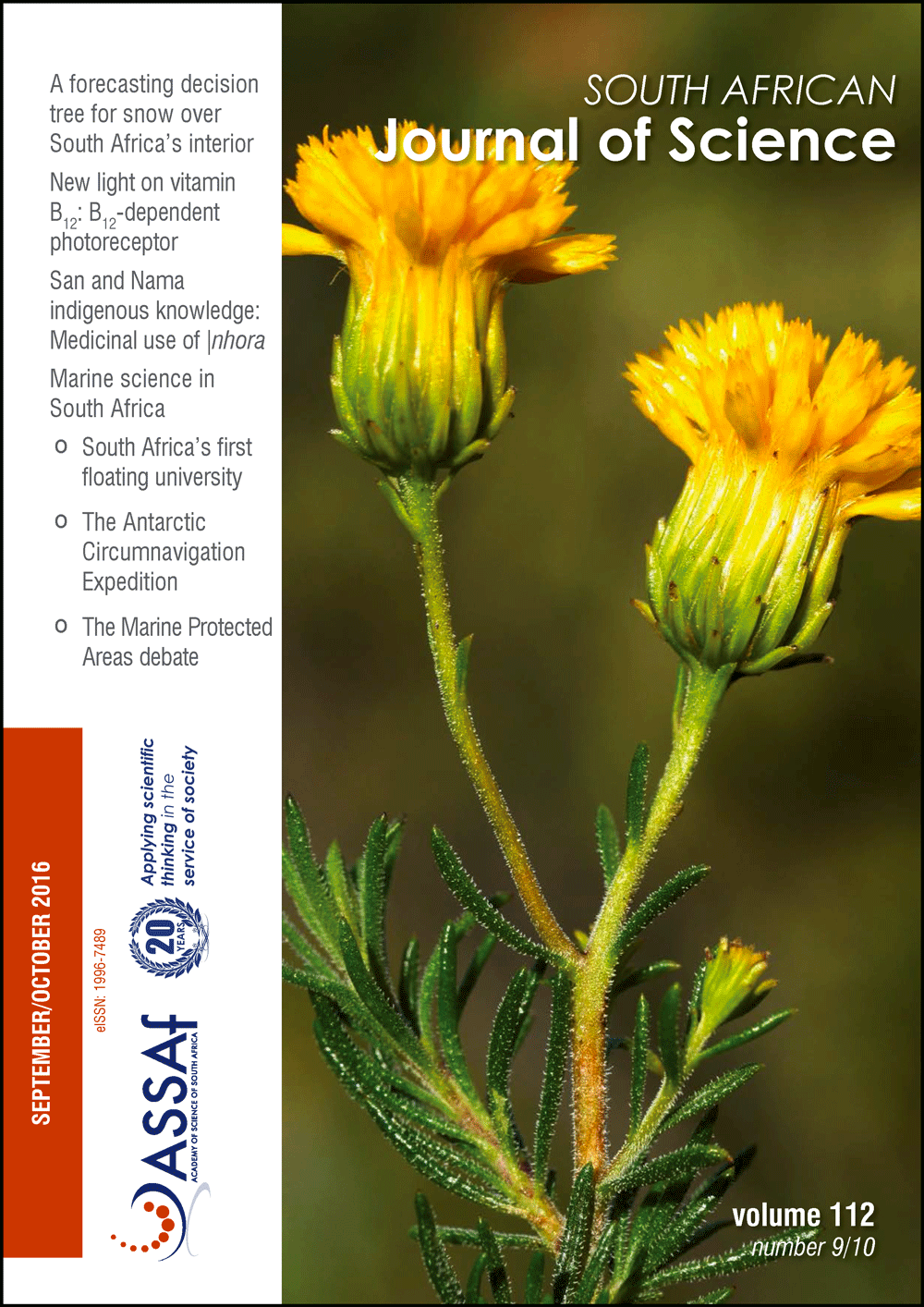San and Nama indigenous knowledge: The case of |nhora (Pteronia camphorata) and its medicinal use
DOI:
https://doi.org/10.17159/sajs.2016/20160044Keywords:
Asteraceae, essential oil, ethnobotany, leaf anatomy, antimicrobial activityAbstract
A hitherto unidentified medicinal plant is here identified for the first time as Pteronia camphorata (L.) L., an aromatic shrub of the Asteraceae family endemic to the western and southern coastal region of South Africa. The plant was described in this journal by Laidler1 in 1928 as ‘D/nhora buchu’, and is one of the important types of buchu used by the Nama people. We report the traditional medicinal uses among San and Nama people, based on our interviews with rural participants. These include the treatment of colds, influenza, chest ailments and tuberculosis, as well as convulsions, haemorrhoids and inflammation of the neck. The major and minor chemical compounds of the essential oil that is produced by the plant are identified, together with the site of accumulation of this volatile oil within the leaf. We also investigated the plant’s antimicrobial activity against a selection of a yeast and two Gram-negative and one Gram-positive bacteria, all of which are associated with respiratory infections. P. camphorata is scientifically poorly known but is an important San and Nama traditional remedy. Our study not only prevents the potential loss of historically important indigenous knowledge, but also provides the first scientific evidence to validate the traditional use of ǀnhora against upper and lower respiratory tract infections, including tuberculosis. This detailed study has wider application in demonstrating the fragility of the oral–traditional knowledge of a scientifically neglected indigenous group. It also highlights the scientific and practical importance of preserving traditional plant-use knowledge within a botanically diverse region.
Significance:- Reveals the botanical identity of ǀnhora, an important Nama medicinal plant.
- Presents scientific evidence to validate the traditional uses.
- Contributes to the cultural heritage of a scientifically neglected indigenous group.
- Demonstrates the fragility of oral–traditional knowledge.
Published
Issue
Section
License

All articles are published under a Creative Commons Attribution 4.0 International Licence
Copyright is retained by the authors. Readers are welcome to reproduce, share and adapt the content without permission provided the source is attributed.
Disclaimer: The publisher and editors accept no responsibility for statements made by the authors
How to Cite
- Abstract 590
- PDF 866
- EPUB 198
- XML 233












.png)